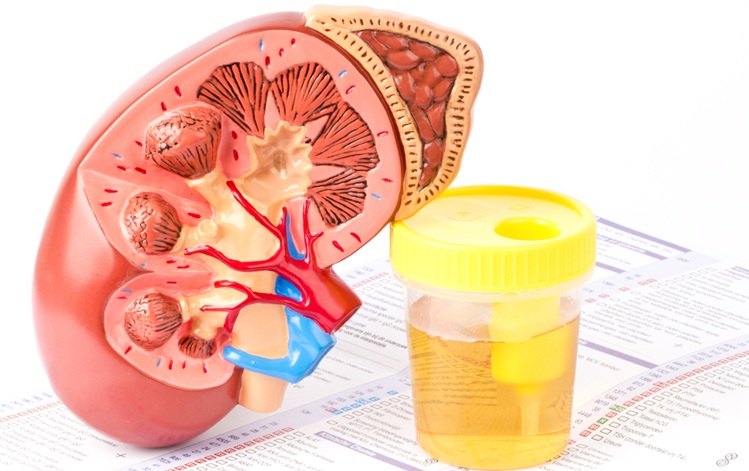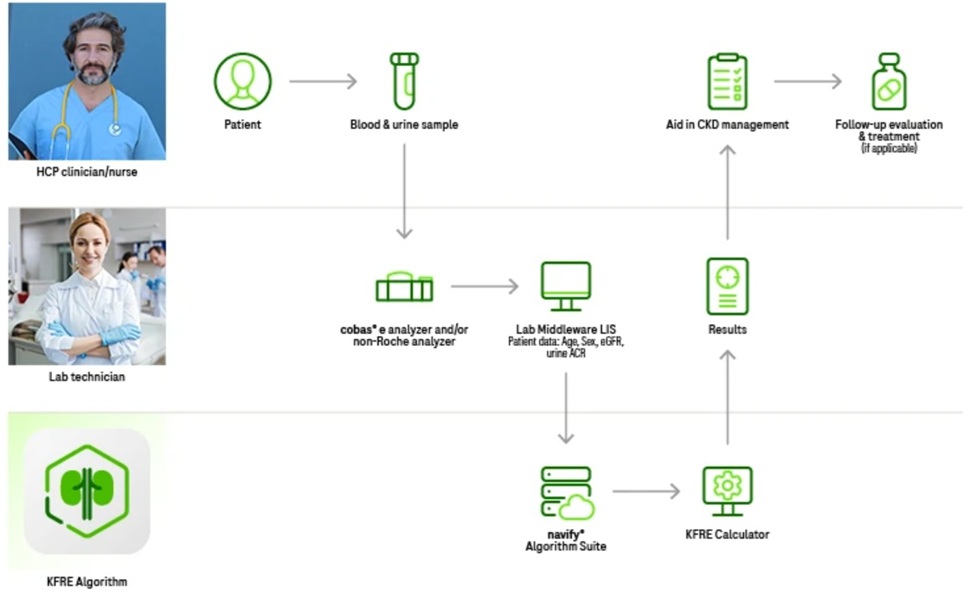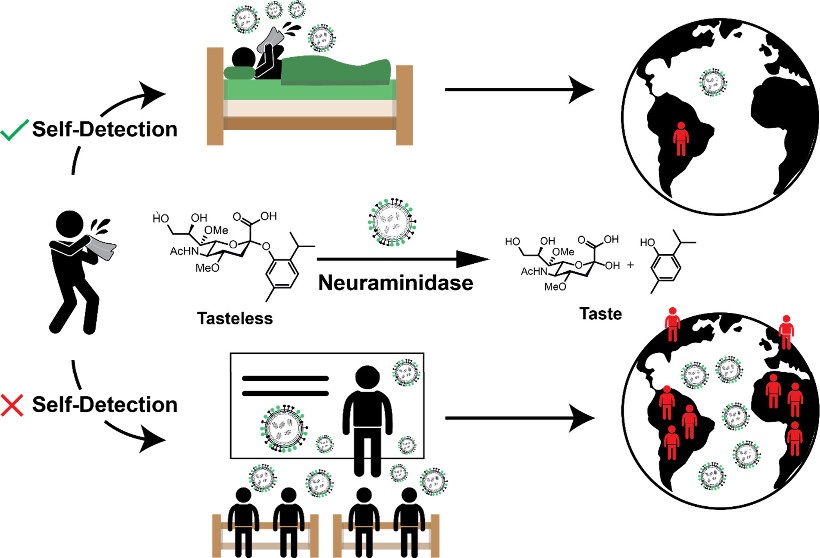Bacteria-Based Test Strips Can Monitor Blood Glucose
|
By LabMedica International staff writers Posted on 26 Jan 2012 |
Segments of DNA embedded in bacteria can be coded to detect changes in osmolarity resulting from the presence of glucose in a blood sample.
Students at the Missouri University of Science and Technology (MST, Rolla, USA) used a nonvirulent strain of E.coli with designed genes integrated in the bacteria’s DNA, enabling them to sense the presence of glucose in correlation to changes in osmolarity. When glucose is detected, the bacteria emit a yellow glow, and as its concentration rises, so does the light emitted glow brighter. The system might also eventually serve as the basis for a new method to monitor blood glucose levels by replacing the fluorescent gene with one that would make the bacteria change color, based on glucose concentrations.
To make the device, the students used an intermediate biobrick with a ribosome-binding site and the reporter gene (eYFP), which was then coupled to another biobrick that had three binding sites for the transcriptional regulatory protein phosphorylated OmpR. The phosphorlyation of OmpR by EnvZ (an inner membrane protein that senses osmolarity) positively correlated with the osmolarity of the system. When one or two of the binding sites are occupied, RNA polymerase is recruited to begin downstream transcription of eYFP. However, when all three OmpR binding sites are occupied, RNA polymerase cannot bind, the reporter gene can no longer be produced, and the system is inhibited.
As osmolarity increases from very low levels, the fluorescence produced by the system increases, until it reaches a threshold osmolarity level that when crossed causes the fluorescence to decrease as a result of the ensuing inherent down-regulation of the system. The activity of the system can be quantified because the two-component regulatory system of EnvZ and OmpR controls transcription of the eYFP gene, dictating the level of fluorescence.
“All you would have to do is put the DNA inside a bacteria and you've got your test strip,” said Erica Shannon, a senior year student in biological sciences at MST. “In the future, based on further research, an insulin gene could be added to this system for use in insulin pumps, where specific glucose levels trigger insulin production.”
The project was developed the system as part of an annual competition sponsored by the International Genetically Engineered Machine Foundation (iGEM; Boston, MA, USA) held during October 2011, in Indianapolis (IN, USA); the MST iGEM chapter received a silver medal for their effort.
Related Links:
Missouri University of Science and Technology
International Genetically Engineered Machine Foundation
Students at the Missouri University of Science and Technology (MST, Rolla, USA) used a nonvirulent strain of E.coli with designed genes integrated in the bacteria’s DNA, enabling them to sense the presence of glucose in correlation to changes in osmolarity. When glucose is detected, the bacteria emit a yellow glow, and as its concentration rises, so does the light emitted glow brighter. The system might also eventually serve as the basis for a new method to monitor blood glucose levels by replacing the fluorescent gene with one that would make the bacteria change color, based on glucose concentrations.
To make the device, the students used an intermediate biobrick with a ribosome-binding site and the reporter gene (eYFP), which was then coupled to another biobrick that had three binding sites for the transcriptional regulatory protein phosphorylated OmpR. The phosphorlyation of OmpR by EnvZ (an inner membrane protein that senses osmolarity) positively correlated with the osmolarity of the system. When one or two of the binding sites are occupied, RNA polymerase is recruited to begin downstream transcription of eYFP. However, when all three OmpR binding sites are occupied, RNA polymerase cannot bind, the reporter gene can no longer be produced, and the system is inhibited.
As osmolarity increases from very low levels, the fluorescence produced by the system increases, until it reaches a threshold osmolarity level that when crossed causes the fluorescence to decrease as a result of the ensuing inherent down-regulation of the system. The activity of the system can be quantified because the two-component regulatory system of EnvZ and OmpR controls transcription of the eYFP gene, dictating the level of fluorescence.
“All you would have to do is put the DNA inside a bacteria and you've got your test strip,” said Erica Shannon, a senior year student in biological sciences at MST. “In the future, based on further research, an insulin gene could be added to this system for use in insulin pumps, where specific glucose levels trigger insulin production.”
The project was developed the system as part of an annual competition sponsored by the International Genetically Engineered Machine Foundation (iGEM; Boston, MA, USA) held during October 2011, in Indianapolis (IN, USA); the MST iGEM chapter received a silver medal for their effort.
Related Links:
Missouri University of Science and Technology
International Genetically Engineered Machine Foundation
Latest Technology News
- Viral Biosensor Test Simultaneously Detects Hepatitis and HIV
- Acoustofluidic Device to Transform Point-Of-Care sEV-Based Diagnostics
- AI Algorithm Assesses Progressive Decline in Kidney Function
- Taste-Based Influenza Test Could Replace Nasal Swabs with Chewing Gum
- 3D Micro-Printed Sensors to Advance On-Chip Biosensing for Early Disease Detection
- Hybrid Pipette Combines Manual Control with Fast Electronic Aliquoting
- Coral-Inspired Capsule Samples Hidden Bacteria from Small Intestine
- Rapid Diagnostic Technology Utilizes Breath Samples to Detect Lower Respiratory Tract Infections
Channels
Clinical Chemistry
view channel
VOCs Show Promise for Early Multi-Cancer Detection
Early cancer detection is critical to improving survival rates, but most current screening methods focus on individual cancer types and often involve invasive procedures. This makes it difficult to identify... Read more
Portable Raman Spectroscopy Offers Cost-Effective Kidney Disease Diagnosis at POC
Kidney disease is typically diagnosed through blood or urine tests, often when patients present with symptoms such as blood in urine, shortness of breath, or weight loss. While these tests are common,... Read moreMolecular Diagnostics
view channel
Urine Test Could Replace Painful Kidney Biopsies for Lupus Patients
Lupus is an autoimmune disorder that causes the immune system to attack the body’s own tissues and organs. Among the five million people living with lupus globally, nearly half develop lupus nephritis,... Read more
Blood Test Guides Post-Surgical Immunotherapy for Muscle-Invasive Bladder Cancer
After surgery for muscle-invasive bladder cancer, many patients face uncertainty about whether residual cancer cells remain in their bodies. Now, a new international phase 3 study has demonstrated that... Read more
Mitochondrial DNA Mutations from Kidney Stressors Could Predict Future Organ Decline
Kidney-related diseases are alarmingly common: chronic kidney disease (CKD) affects more than one in seven U.S. adults, while about 20% of hospitalized adults are diagnosed with acute kidney injury (AKI).... Read moreHematology
view channel
Viscoelastic Testing Could Improve Treatment of Maternal Hemorrhage
Postpartum hemorrhage, severe bleeding after childbirth, remains one of the leading causes of maternal mortality worldwide, yet many of these deaths are preventable. Standard care can be hindered by delays... Read more
Pioneering Model Measures Radiation Exposure in Blood for Precise Cancer Treatments
Scientists have long focused on protecting organs near tumors during radiotherapy, but blood — a vital, circulating tissue — has largely been excluded from dose calculations. Each blood cell passing through... Read more
Platelets Could Improve Early and Minimally Invasive Detection of Cancer
Platelets are widely recognized for their role in blood clotting and scab formation, but they also play a crucial role in immune defense by detecting pathogens and recruiting immune cells.... Read more
Portable and Disposable Device Obtains Platelet-Rich Plasma Without Complex Equipment
Platelet-rich plasma (PRP) plays a crucial role in regenerative medicine due to its ability to accelerate healing and repair tissue. However, obtaining PRP traditionally requires expensive centrifugation... Read moreImmunology
view channel
Molecular Microscope Diagnostic System Assesses Lung Transplant Rejection
Lung transplant recipients face a significant risk of rejection and often require routine biopsies to monitor graft health, yet assessing the same biopsy sample can be highly inconsistent among pathologists.... Read more
Blood Test Tracks Treatment Resistance in High-Grade Serous Ovarian Cancer
High-grade serous ovarian cancer (HGSOC) is often diagnosed at an advanced stage because it spreads microscopically throughout the abdomen, and although initial surgery and chemotherapy can work, most... Read more
Luminescent Probe Measures Immune Cell Activity in Real Time
The human immune system plays a vital role in defending against disease, but its activity must be precisely monitored to ensure effective treatment in cancer therapy, autoimmune disorders, and organ transplants.... Read more
Blood-Based Immune Cell Signatures Could Guide Treatment Decisions for Critically Ill Patients
When a patient enters the emergency department in critical condition, clinicians must rapidly decide whether the patient has an infection, whether it is bacterial or viral, and whether immediate treatment... Read moreMicrobiology
view channel
Fast Noninvasive Bedside Test Uses Sugar Fingerprint to Detect Fungal Infections
Candida bloodstream infections are a growing global health threat, causing an estimated 6 million cases and 3.8 million deaths annually. Hospitals are particularly vulnerable, as weakened patients after... Read more
Rapid Sepsis Diagnostic Device to Enable Personalized Critical Care for ICU Patients
Sepsis is a life-threatening condition that occurs when the body’s response to infection spirals out of control, damaging organs and leading to critical illness. Patients often arrive at intensive care... Read morePathology
view channel
AI-Powered Method Combines Blood Data to Accurately Measure Biological Age
Chronological age tells us how many years we’ve lived, but not how quickly our bodies are ageing. Some people stay healthy well into their 80s or 90s, while others experience decline much earlier.... Read more
AI Tool Detects Cancer in Blood Samples In 10 Minutes
Detecting cancer recurrence or spread often depends on identifying rare tumor cells circulating in the bloodstream — a process known as a liquid biopsy. However, current methods rely on trained specialists... Read moreTechnology
view channel
Viral Biosensor Test Simultaneously Detects Hepatitis and HIV
Globally, over 300 million people live with Hepatitis B and C, and 40 million with HIV, according to WHO estimates. Diagnosing bloodborne viruses such as HIV and Hepatitis B and C remains challenging in... Read more
Acoustofluidic Device to Transform Point-Of-Care sEV-Based Diagnostics
Rapid and sensitive detection of small extracellular vesicles (sEVs)—key biomarkers in cancer and organ health monitoring—remains challenging due to the need for multiple preprocessing steps and bulky... Read moreIndustry
view channel
Advanced Instruments Merged Under Nova Biomedical Name
Advanced Instruments (Norwood, MA, USA) and Nova Biomedical (Waltham, MA, USA) are now officially doing business under a single, unified brand. This transformation is expected to deliver greater value... Read more









 assay.jpg)









